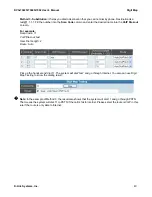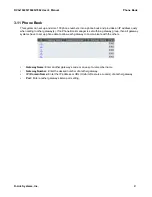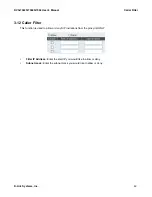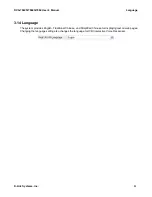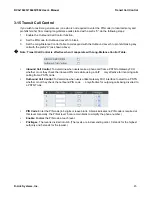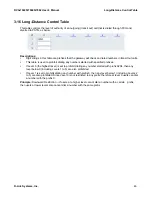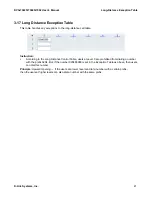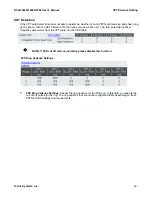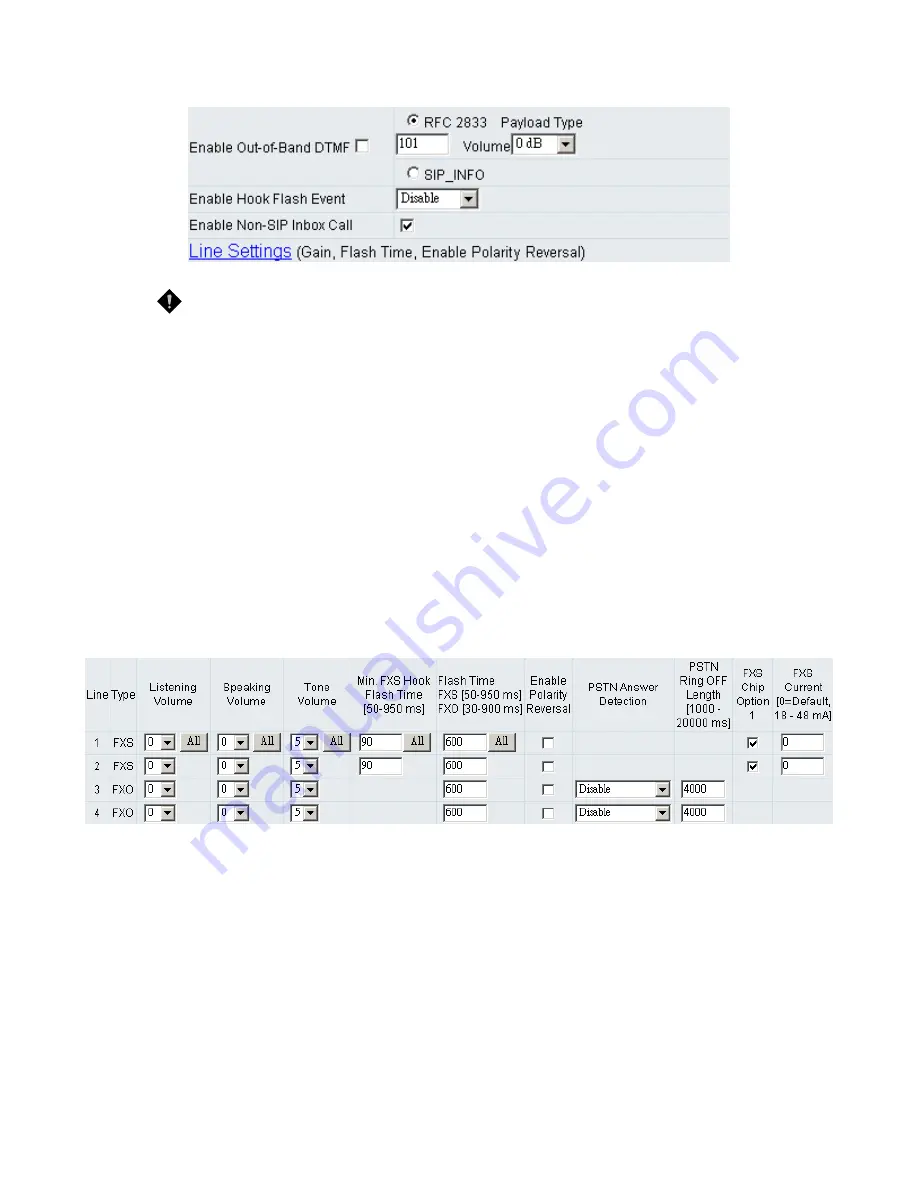
DVG-7022S/7044S/7062 User’s Manual
Advanced Options
y
Enable Out-of-Band DTMF:
To send DTMF keys (0~9, *, #,) follow the RFC2833 rules or via SIP Info.
NOTE:
Out-of-Band DTMF transport method may vary with different VoIP networks, please
contact your VoIP provider for their preferred method.
y
Payload Type:
payload type of RFC2833.
y
Volume:
Defines the volume of RFC2833.
y
SIP_INFO:
This is an alternative for DTMF event over IP. When enabled, DTMF is relayed over SIP
signaling path using SIP NOTIFY messages.
y
Enable Hook Flash Event:
Auto, RFC2833, or SIP info can be selected for the signaling method of
Hook Flash event.
Disable:
It is to disable Hook Flash Event.
Auto:
It is used to send Hook Flash Event followed the type of Out-of-Band DTMF. (i.e. Hook Flash
Event is send by RFC 2833 if RFC 2833 is selected.)
SIP_INFO:
It is to send Hook Flash Event by SIP INFO.
RFC 2833:
It is to send Hook Flash Event by RFC 2833.
y
Enable Non-SIP Inbox Call:
This feature allows user to make local calls. Local Call here means the call
does not go through the Internet and if the dialed number is the extension of other line. You can un-tick it
to configure as all calls go through the Internet.
Line
Settings
y
Listening Volume
: Adjusts the hearing volume.
y
Speaking Volume
: Adjusts the speaking volume.
y
Tone Volume
: Adds a new option to make tone volume adjustable. This setting will be applied to all tones
generated by the DVG-4088S/4032S including Dial Tone, Busy Tone, and so on.
y
Min.FXS Hook Flash Time:
It is to set the minimum flash time for FXS detecting.
y
Flash Time
:
FXS:
Used to adjust the detecting period of flash signal from the phone set connected to the FXS port.
For example, if pressing the HOLD key will disconnect a call, increase the “Flash Detect Time” should
fix this issue.
FXO:
Used to set the time frame that FXO generates a FLASH signal.
y
Enable Polarity Reversal
:
FXS:
As the remote site answer this call or hook on the FXS port will reverse the polarity.
D-Link Systems, Inc.
34





















